


The Key To Longevity In Sports
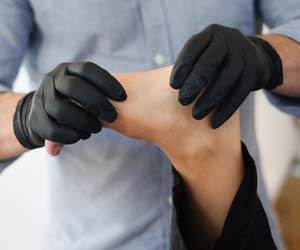
Injuries are an inherent part of the sports world, and athletes, whether professional or recreational, are no strangers to the physical toll that sports can take on their bodies. However, a holistic approach to injury prevention has gained prominence in recent years, recognizing that injury prevention goes beyond just the physical aspect of training. In this article, we will explore the concept of a holistic approach to injury prevention, encompassing not only the physical but also the mental and lifestyle components.
1. Physical Conditioning: Physical strength, flexibility, and overall conditioning are fundamental aspects of injury prevention. Building muscle, improving joint stability, and increasing flexibility can reduce the risk of injuries. This includes strength training, stretching, and functional exercises that target the specific needs of athletes.
2. Proper Technique And Form: Training in the correct technique and form is crucial to preventing injuries. Athletes must learn how to execute movements and actions accurately to reduce the risk of injury.
3. Warm-Up And Cool-Down: Effective warm-up routines prepare the body for exercise by increasing blood flow and raising body temperature. Cool-downs help the body recover and prevent muscle soreness. Both are vital components of injury prevention.
4. Nutrition And Hydration: Proper nutrition and hydration support overall health and recovery. Athletes should maintain a balanced diet to provide the necessary fuel for the body and stay well-hydrated to perform at their best.
5. Rest And Recovery: Adequate rest and recovery are critical for preventing overuse injuries. Sleep and relaxation are key to allowing the body to repair and regenerate. Overtraining can lead to fatigue and an increased risk of injury.
6. Mental Resilience: Incorporating mental health and resilience training can help athletes cope with the stress and pressure of competition. A strong mental state can also help athletes make better decisions and reduce the risk of impulsive actions that can lead to injuries.
7. Listen To The Body: Athletes must pay attention to their bodies and listen to the signals they provide. Pain, discomfort, or unusual sensations can be indicators of potential injuries. Ignoring these signals can lead to severe problems.
8. Injury Prevention Workshops: Attending injury prevention workshops and classes can provide athletes with specialized techniques and strategies to reduce injury risks in their chosen sport. These workshops are often facilitated by experts and can offer valuable insights.
9. Cross-Training: Incorporating a variety of activities into the training regimen can help prevent overuse injuries. Cross-training allows athletes to use different muscle groups and reduce the risk of strain on a particular area.
10. Support System: Having a strong support system that includes coaches, trainers, and medical professionals can provide guidance and resources for injury prevention and management. Coaches and trainers can offer insights into technique and form, while medical professionals can provide guidance on rehabilitation and recovery.
11. Lifestyle And Recovery Measures: Lifestyle choices also play a role in injury prevention. Factors such as proper sleep, stress management, and maintaining a balanced work-life-training ratio can impact an athlete's susceptibility to injuries.
12. Regular Monitoring: Continuous monitoring and assessment of an athlete's physical condition and progress are vital. Regular check-ups and evaluations help detect potential issues early and allow for necessary adjustments in training and recovery plans.
A holistic approach to injury prevention recognizes that the physical, mental, and lifestyle components all play integral roles in safeguarding an athlete's well-being. By embracing this approach, athletes can reduce the risk of injuries and ensure their long-term health and performance in their chosen sport. A well-rounded strategy that includes physical conditioning, proper technique, nutrition, mental resilience, listening to the body, and a support system is essential. Remember, prevention is key to preserving athletic longevity and enjoying the benefits of sports for years to come.
Embrace The Snowy Slopes
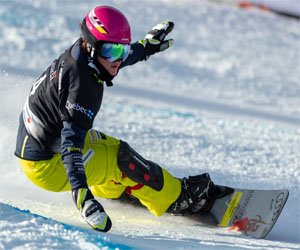 The Basics Of Skiing And Snowboarding: Before you hit the slopes, it's essential to understand the fundamental differences between skiing and snowboarding. Skiing involves using two separate skis on your feet, while snowboarding employs a single snowboard. Skiing is typically easier to learn for beginners as it allows for better balance, while snowboarding requires a bit more coordination but offers a unique sense of control and style.
The Basics Of Skiing And Snowboarding: Before you hit the slopes, it's essential to understand the fundamental differences between skiing and snowboarding. Skiing involves using two separate skis on your feet, while snowboarding employs a single snowboard. Skiing is typically easier to learn for beginners as it allows for better balance, while snowboarding requires a bit more coordination but offers a unique sense of control and style.
Choosing The Right Gear: Selecting the right equipment is crucial to your success on the slopes. Make sure to invest in well-fitted boots, skis or a snowboard, and appropriate clothing to keep you warm and dry. Rental equipment is a cost-effective option for beginners, allowing you to test the sport before committing to your own gear.
Lessons And Instruction: Enrolling in lessons with a certified instructor is a wise choice for beginners. Ski schools and snowboarding instructors can provide you with proper guidance, teach you the essential techniques, and ensure your safety. They will help you learn how to balance, turn, and stop effectively, reducing the risk of injuries.
Understanding Terrain: Ski resorts offer various terrains, including green (beginner), blue (intermediate), and black (advanced) slopes. Start on the green slopes to practice your skills and build confidence. Progress to more challenging terrain as you become more proficient. Always pay attention to trail signs and ski within your comfort zone.
Safety First: Safety should be your top priority. Wear a helmet to protect your head and always follow the mountain's safety guidelines.

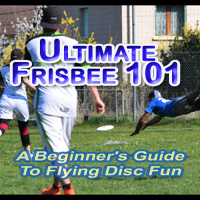
Key Sports Injury Prevention Principles
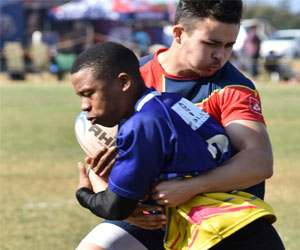 1. Warm-Up And Cool-Down: The warm-up and cool-down routines are fundamental to injury prevention. A proper warm-up involves light aerobic exercises, dynamic stretching, and mobility drills to prepare the body for physical activity. The cool-down includes static stretching and gentle exercises to gradually decrease heart rate and prevent muscle tightness.
1. Warm-Up And Cool-Down: The warm-up and cool-down routines are fundamental to injury prevention. A proper warm-up involves light aerobic exercises, dynamic stretching, and mobility drills to prepare the body for physical activity. The cool-down includes static stretching and gentle exercises to gradually decrease heart rate and prevent muscle tightness.
2. Strength And Conditioning: Maintaining overall body strength and conditioning is crucial to injury prevention. A well-rounded strength training program helps stabilize joints, improve muscle balance, and enhance overall physical resilience.
3. Flexibility And Mobility: Flexibility is key to injury prevention. Incorporating regular stretching exercises into your routine improves joint range of motion and reduces the risk of muscle strains and tears. Dynamic stretching before activity and static stretching afterward are both beneficial.
4. Proper Technique And Form: One of the primary causes of sports injuries is incorrect form and technique. To prevent injuries, athletes should receive proper coaching to ensure they are using correct form when participating in their sport.
5. Gradual Progression: Avoid the temptation to push your limits too quickly. Progress should be gradual and based on your current fitness level. Rapidly increasing the intensity or duration of workouts can lead to overuse injuries.
From Backyard Fun To Global Sport
 Ultimate's roots can be traced back to Columbia High School in Maplewood, New Jersey, in 1968. A group of students led by Joel Silver created a new game that combined elements of soccer, basketball, and football while using a Frisbee as the primary playing object. The game's simple rules, including self-officiation and a strong emphasis on sportsmanship, have remained central to Ultimate's identity.
Ultimate's roots can be traced back to Columbia High School in Maplewood, New Jersey, in 1968. A group of students led by Joel Silver created a new game that combined elements of soccer, basketball, and football while using a Frisbee as the primary playing object. The game's simple rules, including self-officiation and a strong emphasis on sportsmanship, have remained central to Ultimate's identity.
During the early years, Ultimate was primarily played in a casual, grassroots manner, often in backyards, parks, and college campuses. It gained popularity within counterculture circles and was emblematic of the spirit of the 1960s and 1970s, promoting inclusivity, cooperation, and a rejection of traditional authority figures.
As the sport gained momentum, its first governing body, the Ultimate Players Association (now known as USA Ultimate), was established in 1979 to provide structure and consistency to the growing community. This development marked a significant turning point in the sport's evolution. Standardized rules and competitive leagues began to emerge, and tournaments like the National Ultimate Championship became annual events.
The 1980s saw the introduction of gender equity in Ultimate, with mixed-gender teams and the requirement for a balanced gender ratio on the field. This commitment to inclusivity was a pioneering step, setting an example for gender equality in sports that many other disciplines have since followed.

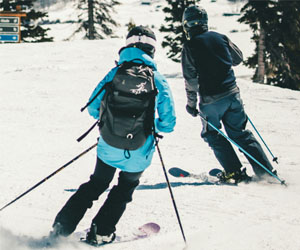
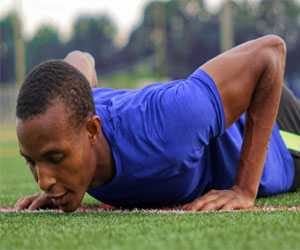
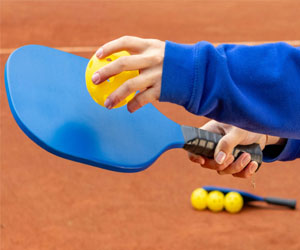


More Than Just A Game
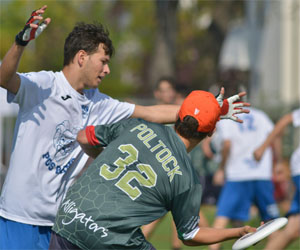 While Ultimate Frisbee is celebrated for its emphasis on sportsmanship, the competitive side of the sport should not be underestimated. As the sport has grown and matured, players have honed their skills, developed advanced strategies, and pushed the boundaries of athleticism. Competitive Ultimate showcases the sport's evolution from a casual pastime to a serious athletic endeavor.
While Ultimate Frisbee is celebrated for its emphasis on sportsmanship, the competitive side of the sport should not be underestimated. As the sport has grown and matured, players have honed their skills, developed advanced strategies, and pushed the boundaries of athleticism. Competitive Ultimate showcases the sport's evolution from a casual pastime to a serious athletic endeavor.
One of the defining features of competitive Ultimate is the level of physicality involved. Players often engage in intense sprinting, jumping, and diving to make plays or defend against their opponents. The sport's fast-paced nature demands not only speed and agility but also endurance and strength. Competitive players are in top physical condition, allowing them to perform at their best throughout a match that can last up to 90 minutes or more.
Strategic gameplay is another hallmark of competitive Ultimate. Teams employ a variety of offensive and defensive strategies to gain an edge over their opponents. Offense focuses on precise throws, timed cuts, and well-coordinated teamwork to advance the disc down the field and score points. On the defensive side, players employ zone defenses, person-to-person marking, and strategic positioning to thwart their opponents' advances.
Competitive Ultimate also emphasizes mental acuity. Players must possess an in-depth understanding of the sport's rules and strategies, making split-second decisions about when to pass, cut, or defend. The ability to read the trajectory of the disc and anticipate an opponent's moves is crucial in gaining a competitive advantage.
 The act of camping invites us to unplug from the digital world and embrace the solace of simplicity. With limited or no internet access, we are freed from the shackles of screens and notifications. Instead, we find ourselves engrossed in the here and now, appreciating the quietude of nature and the presence of loved ones around the campfire.
The act of camping invites us to unplug from the digital world and embrace the solace of simplicity. With limited or no internet access, we are freed from the shackles of screens and notifications. Instead, we find ourselves engrossed in the here and now, appreciating the quietude of nature and the presence of loved ones around the campfire.
Moreover, tranquil camping escapes allow us to reconnect with our most primal instincts. As we set up camp, gather firewood, and cook our meals over an open flame, we become attuned to the rhythms of the environment and the resources it provides. This connection with the essentials of survival fosters a sense of self-sufficiency and a deeper appreciation for the world around us.
Tranquil camping escapes are also an invitation to rediscover the beauty of simplicity. With fewer distractions and a pared-down lifestyle, we find ourselves rejoicing in the little things—a breathtaking sunrise, the soothing crackle of a campfire, or the wonder of stargazing without light pollution.